
Asia Pacific
21:32, 19-May-2019
India's Modi set to win election, exit polls suggest
Updated
22:33, 19-May-2019
CGTN
00:37
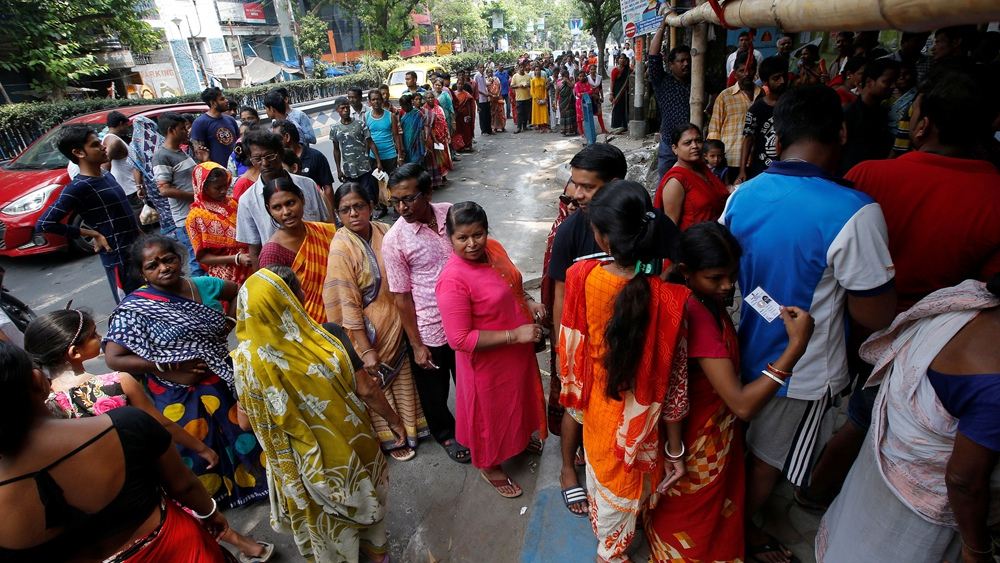
Indian Prime Minister Narendra Modi's ruling alliance is likely to win a clear majority in parliament after a mammoth general election that ended on Sunday. Most exit polls showed a far better showing than expected in recent weeks.
Modi faced criticism early in the campaign for failing to create jobs for youth and weak farm prices, and the election race was thought to be tightening with the main opposition Congress party gaining ground.
But he rallied his Hindu nationalist base and turned the campaign into a fight for national security after tensions rose with Pakistan and attacked his main rival for being soft on the country's arch-foe.
Modi's National Democratic Alliance (NDA) is projected to win 287 seats in the 545-member lower house of parliament followed by 128 for the Congress Party-led opposition alliance, CVoter exit poll showed.
To rule, a party needs the support of 272 lawmakers. Results are expected on May 23.
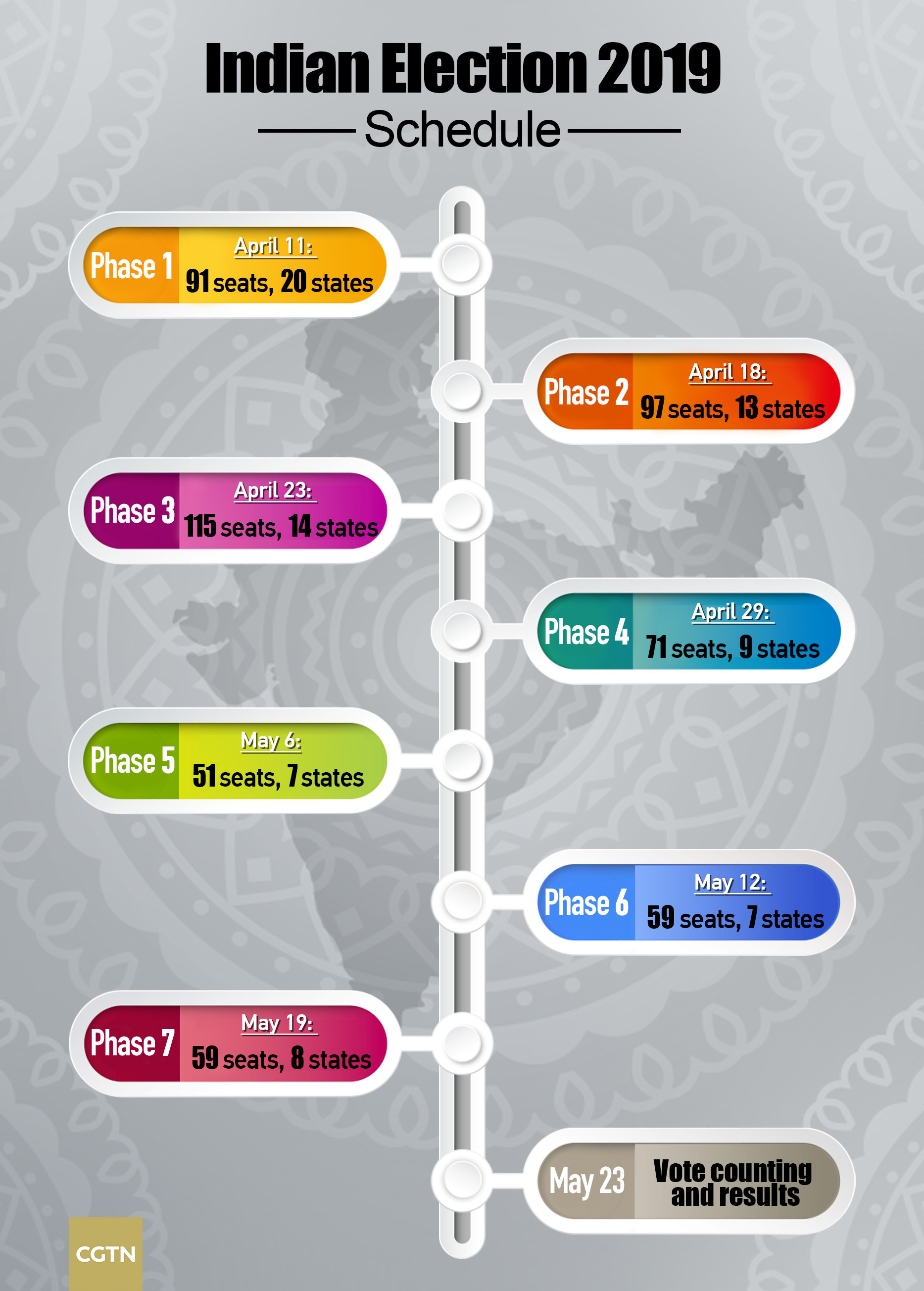
In total, 543 representatives are expected to be elected to the 545-seat 17th Lok Sabha, India's lower house of parliament. The remaining two seats are filled by presidential nominees from the Anglo-Indian community.
The headline names are Narendra Modi, the current prime minister and leader of the Bharatiya Janata Party (BJP), and Rahul Gandhi, leader of the opposition National Congress Party.
Both of the main parties are senior partners in coalitions: The BJP dominates the ruling National Democratic Alliance (NDA), and Congress is part of the United Progressive Alliance (UPA).
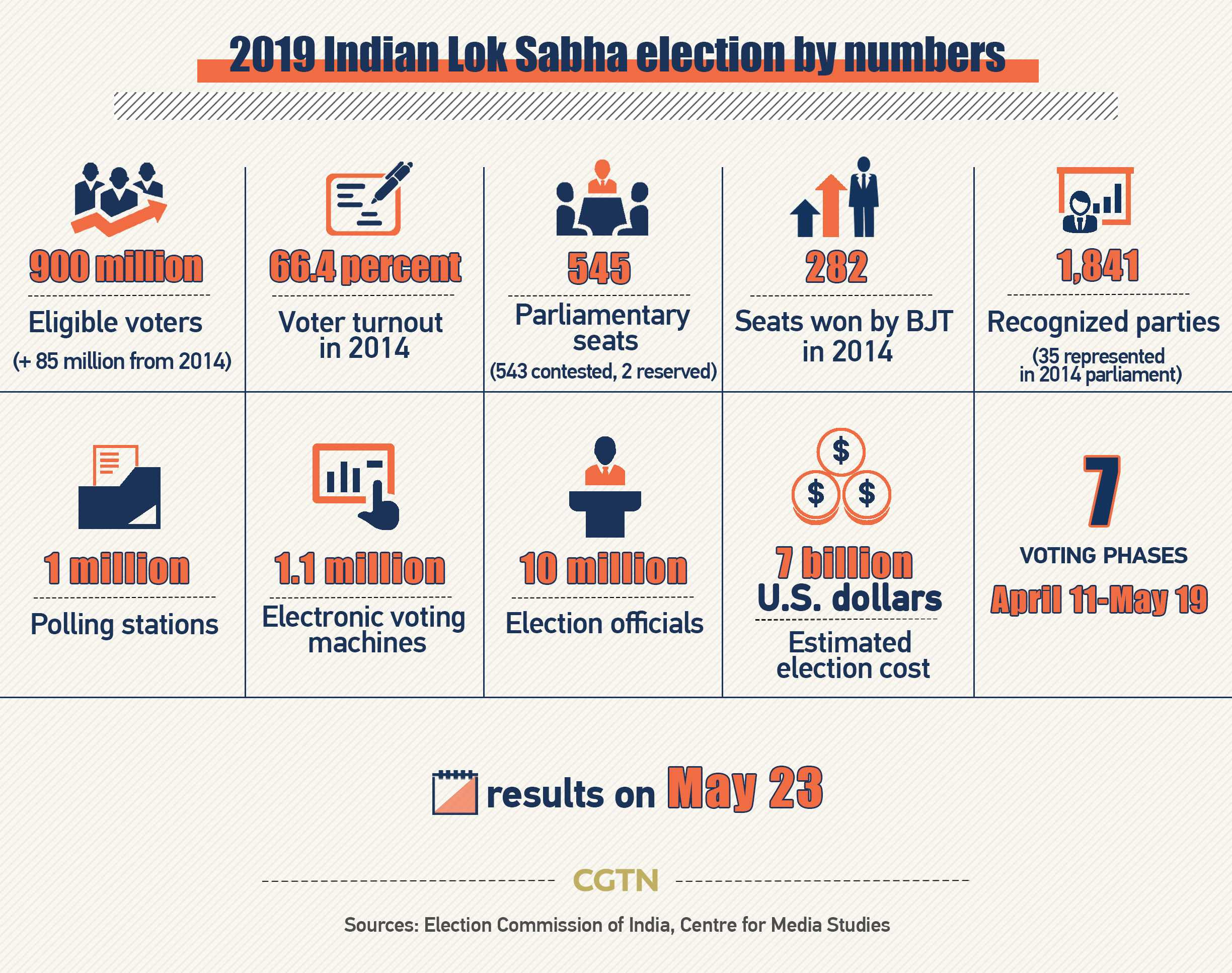
Modi's BJP won 282 seats outright in 2014 (up from 116 in 2009), and the NDA took 336 in total, creating the biggest parliamentary majority in three decades.
Congress was crushed five years ago, winning just 44 seats (down from 206 in 2009) but has shown signs of a revival. The UPA won 60 seats in total in 2014, and parties outside the two main alliances took the remaining 147 seats.
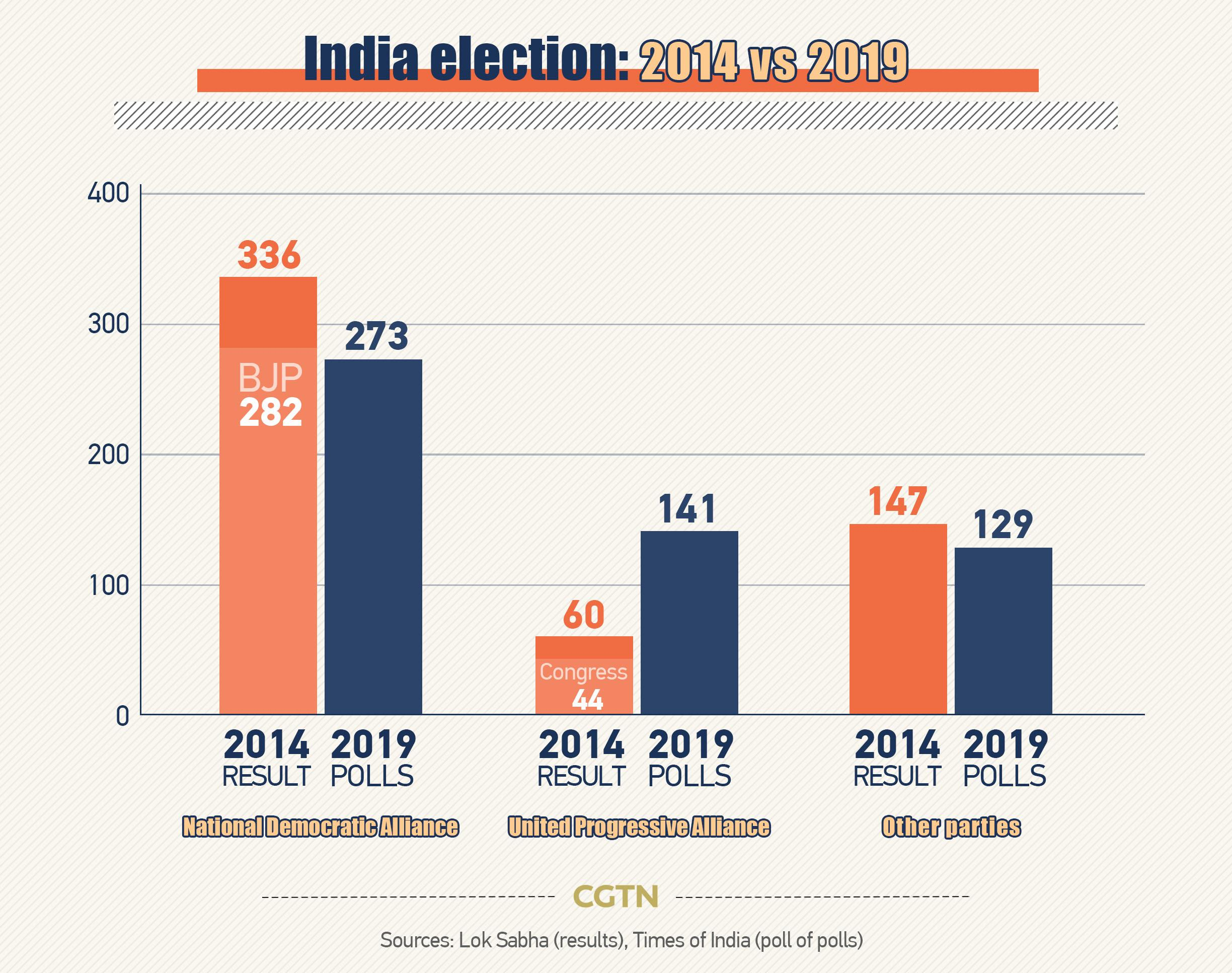
The conservative BJP has campaigned aggressively on Modi's strongman image and played up recent cross-border air strikes against Pakistan. But the opposition, led by the Congress party and its leader Gandhi, have accused him of pursuing divisive policies and neglecting the economy.
Read more:
Modi and Gandhi have hurled insults at each other on a near daily basis with the prime minister calling his rival a "fool" while Gandhi derides Modi as a "thief."
Issues that matter
As in any national election, local factors are often decisive, economy, jobs, farming and national security are all issues with broad significance.
Economic growth has been around seven percent under Modi, and some of the prime minister's reform agenda – including a goods and services tax and medical scheme for the poor – has been pushed through.
Read more:
Unemployment is stubbornly high, however, and joblessness hit a 45-year high of 6.1 percent in the year ending June 2018, according to a government report leaked to the Business Standard. More than half of India's 1.3 billion population is aged under 25, and the report suggests around one in five Indians aged between 15 and 29 are jobless.
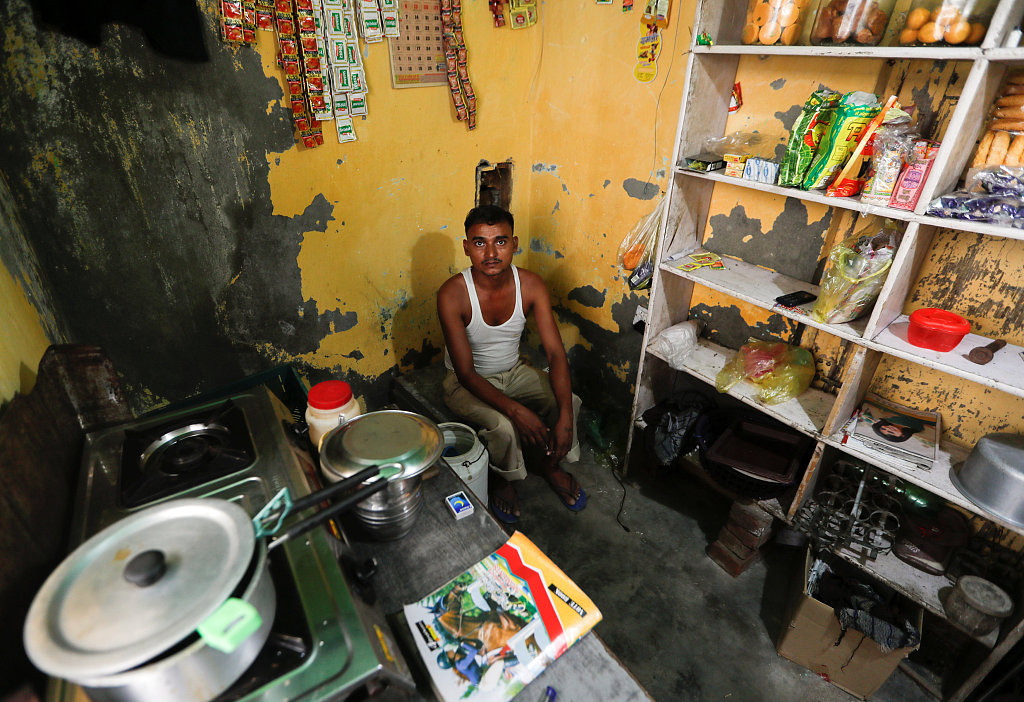
Raj Narayan, who lost his job as a power loom operator earlier this year, sits inside his tea shop in Panipat in the northern state of Haryana, India, August 24, 2018. /VCG Photo
Raj Narayan, who lost his job as a power loom operator earlier this year, sits inside his tea shop in Panipat in the northern state of Haryana, India, August 24, 2018. /VCG Photo
Farming is also an important electoral issue. There are an estimated 263 million farmers in India and many more people are involved in the industry, making it a huge political constituency. It is facing increasingly tough conditions, with costs up and crop prices down.
National security and relations with Pakistan are also live issues. Modi received a polling boost after Indian jets attacked what he claimed were terrorist training camps in Pakistan, following an attack by Pakistan-based militants on an Indian army convoy which killed 40 personnel in Indian-controlled Kashmir.
Read more:
(With inputs from agencies)

SITEMAP
Copyright © 2018 CGTN. Beijing ICP prepared NO.16065310-3
Copyright © 2018 CGTN. Beijing ICP prepared NO.16065310-3